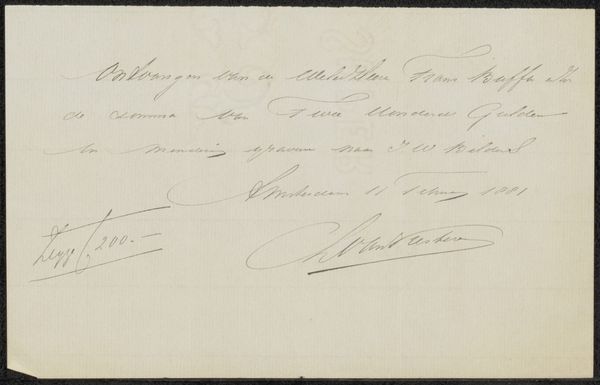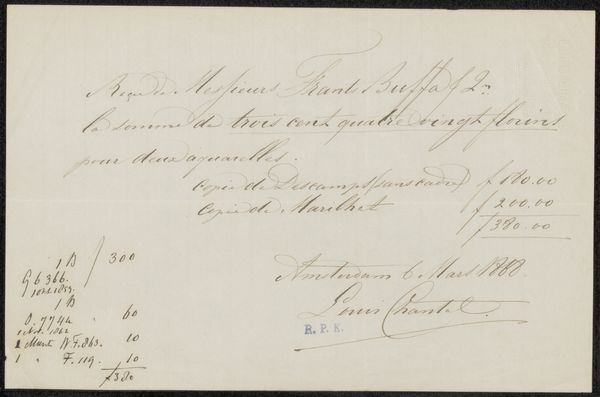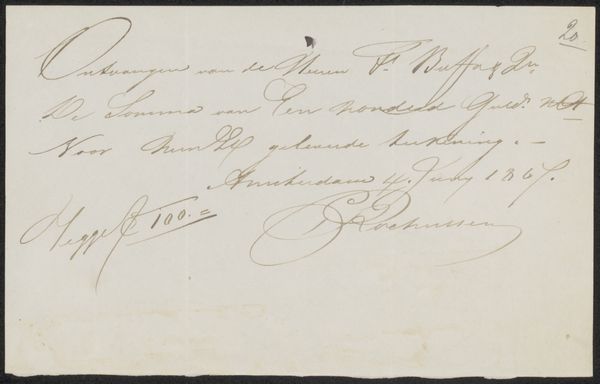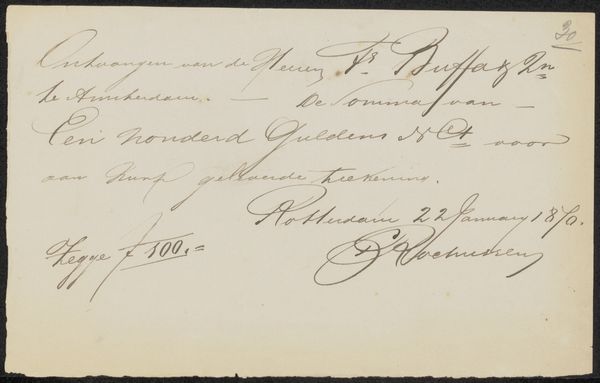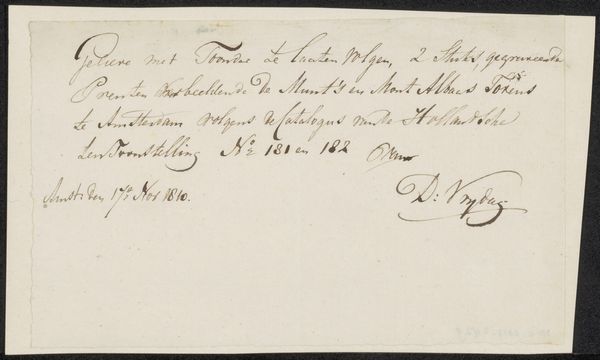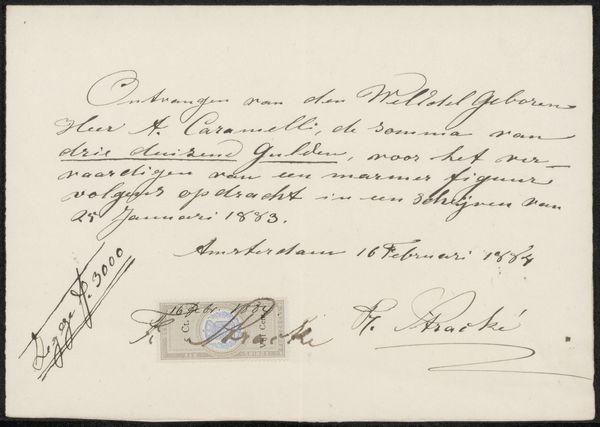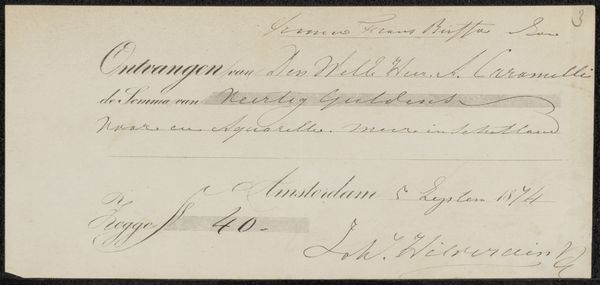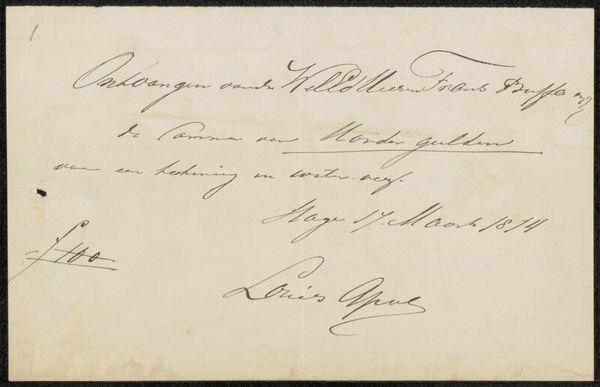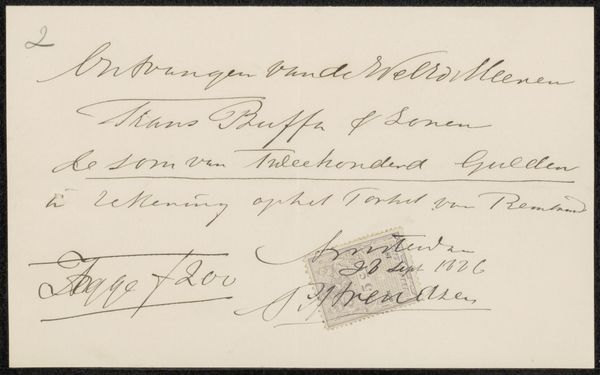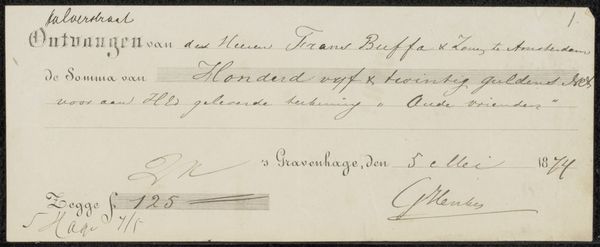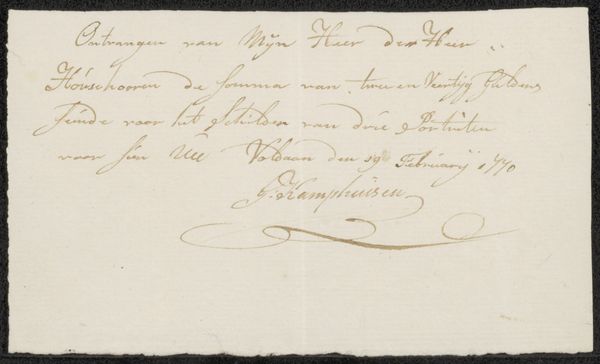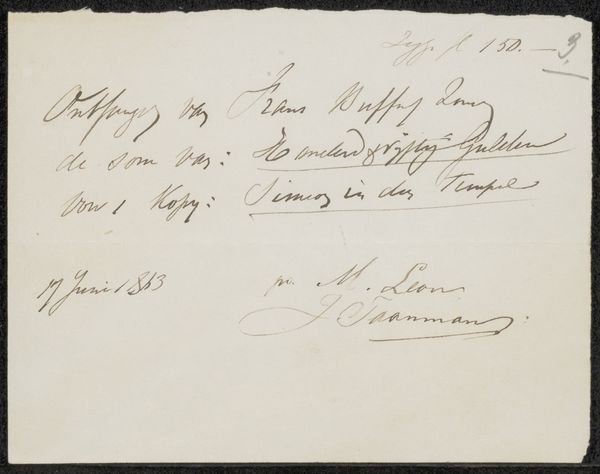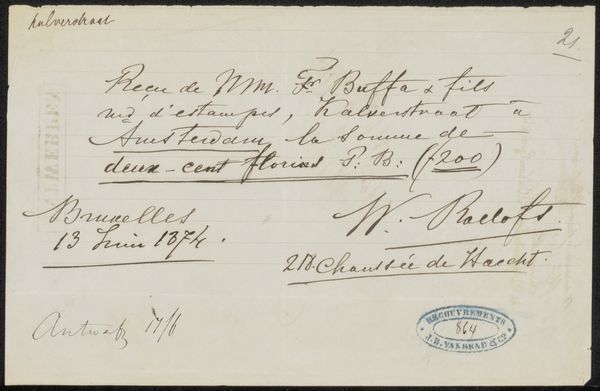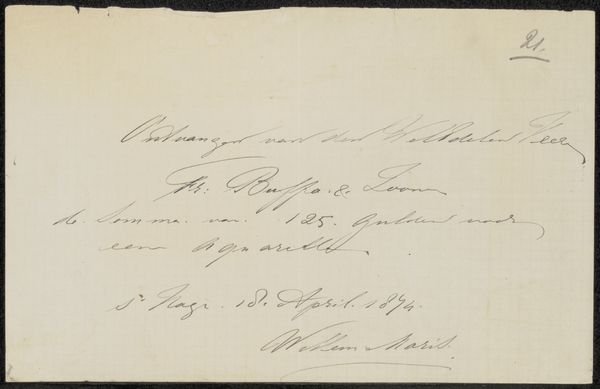
drawing, paper, ink
#
drawing
#
script typography
#
hand-lettering
#
hand drawn type
#
feminine typography
#
hand lettering
#
paper
#
ink
#
hand-drawn typeface
#
modern calligraphy
#
thick font
#
handwritten font
#
calligraphy
#
small lettering
Copyright: Rijks Museum: Open Domain
Curator: It strikes me immediately how ephemeral this feels. Almost like catching a whisper from the past. Editor: Indeed! What we have here is a receipt—a "Kwitantie"—created possibly in 1886 by Frans Buffa en Zonen. It acknowledges payment from a Charles Roskam. It’s ink on paper, held by the Rijksmuseum. But look closely—it's more than just a ledger entry; it's an intimate dance of calligraphy. Curator: That script—flowing, almost alive—is remarkable. It's imbued with the culture's sense of decorum and beauty. Note the flourishes, the weight of the strokes; even a mundane transaction becomes art. There’s a powerful story here, far more than simple accounting. Editor: I see it too. It's funny how handwriting becomes this little time capsule. Can't you almost picture the person who wrote it? I imagine a precise, slightly theatrical character. Curator: Perhaps even seeing their social status or education through the very formation of each letter. It suggests societal roles of who writes and what is deemed worthy of such careful notation. The past preserved in fluid strokes. Even the stamp acts as a marker of authentication and bureaucratic rituals. Editor: Right, this little government stamp adds a layer of meaning. It reminds us that even personal notes get caught up in these grand social systems. Bureaucracy leaves its trace, quite literally! It makes you think about all the transactions, all the little pieces of paper that make up the bigger picture of how we lived. Curator: It’s compelling to see how something so practical is transformed, becomes laden with societal memory. Forms of payment have of course transformed from inky quills on paper to the swift tap of digital payment. But cultural practices still exist—the need to formalize transactions, the exchange of money for service, and ultimately, the drive to record our interactions for prosperity. Editor: Makes you wonder what today's version of this looks like! Maybe a screenshot of Venmo? Probably not nearly as lovely to look at, I fear. It makes you wonder if that loss translates to any kind of social loss too. Curator: That's it, I think—the shift of cultural symbols, which ultimately affect our ways of knowing. Editor: Well said! I might actually start writing receipts in calligraphy now.
Comments
No comments
Be the first to comment and join the conversation on the ultimate creative platform.
